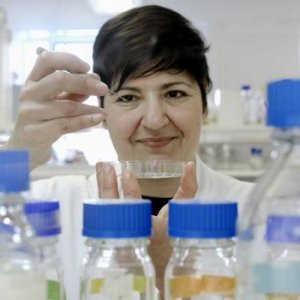NuNano’s marketing lead, Rebecca Megson-Smith, is our resident bookworm. A literature graduate with a background in writing and publishing she jumped on the chance to get her hands on Sonia Contera’s book Nano Comes to Life: How Nanotechnology is Transforming Medicine and the Future of Biology when it came into our office last month. Here’s her review of what looks like a cracking read for scientists and interested non-experts alike.

Covering sciences ‘greatest hits’ since we have been able to look at the world on the nanoscale, as well as where it is taking our understanding of life, Nano Comes to Life: How Nanotechnology is Transforming Medicine and the Future of Biology is an inspiring and joyful read.
As author Sonia Contera writes, biology is an area of intense interest and study. With the advent of nanotechnology, a more diverse range of scientists from across the disciplines are now coming together to solve some of the biggest issues of our time.
Being able to see and interact with matter at the nanoscale has brought in particular a new generation of physical scientists into the biological and medical arena. This in turn has brought fresh perspective, transforming the study of life.
Revolutionising the Study of Life
The ability to visualise, interact with, manipulate and create matter at the nanometer scale - the level of molecules, proteins and DNA - combined with the physicists quantitative and mathematical approach is revolutionising our understanding of the complexity which underpins life.
I particularly enjoyed the section that discussed the history of scanning tools. Here Contera highlights how profoundly the development of the STM transformed human interaction with matter.
Not only did it image at the atomic level with ‘unprecedented accuracy using a relatively simple, cheap tool’, but the STM was able to pick up and move the atoms around one by one. And what it couldn’t do effectively - work within the biological environments - was and is achievable through the introduction of the AFM.
Contera’s enthusiasm for her subject is contagious, urging readers to go and see for themselves the beauty of, for example, the high-speed AFM videos available online of myosin molecules walking on actin tracks.
Her awe and wonder at what we now know and can perceive thanks to nanotechnology is self-evident. For Contera, bringing the science of big questions - e.g. physics - to the study of molecules and proteins has created an important move away from the reductionist biological view of life - that we are little more than a ‘biochemical product of an algorithm written in genes’.
She writes:
“Physics urges us to consider life as a whole emergent from the greater whole - emanating from the same rules that govern the entire cosmos.”
A Transmaterial Tomorrow
Contera’s excitement is felt in equal force when she considers the future of nano and how it will - inevitably it feels - benefit humankind. She examines how nano is helping to respond to some of greatest crises of our time such as antimicrobial resistance, and how we are moving into a ‘transmaterial future’. This transmaterial science, where artificial materials inspired by biology are created, is going to be central in unlocking key health challenges that face us today.
Nano Comes to life is a fascinating journey through the impact of nanotechnology on the life sciences - and more broadly on our lives in general. Contera writes from a refreshingly optimistic standpoint and is a real champion of the good that science can do. She writes passionately about the motivations of those of us who have selected careers in the sciences - about our overwhelming belief that this is how we can make a positive difference.
As someone with a huge interest in science but no formal training, I found the book fascinating, insightful and accessible.
Contera maps the impact of nano across disciplines and it’s that wide lens on the subject that makes this the sort of book that would equally appeal to scientists too. If you have loved ones still pestering for stocking filler ideas, this could be the answer…
I leave you with another bold declaration from Sonia about the good that the merging of the sciences has offered and, on behalf of everyone at NuNano, would like to wish you all a very Merry Christmas and Happy New Year - see you in 2020!
“As physics, engineering, computer science and materials science merge with biology, they are actually helping to reconnect science and technology with the deep questions that humans have asked themselves from the beginning of civilization: What is life? What does it mean to be human when we can manipulate and even exploit our own biology?”
About Sonia Contera
Sonia Contera is professor of biological physics in the Department of Physics at the University of Oxford. She is a leading pioneer in the field of nanotechnology.